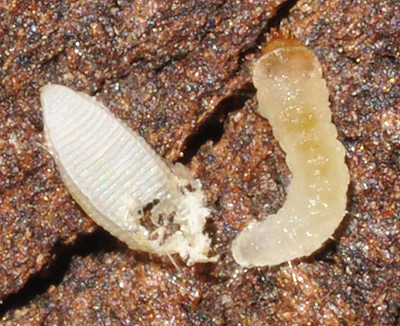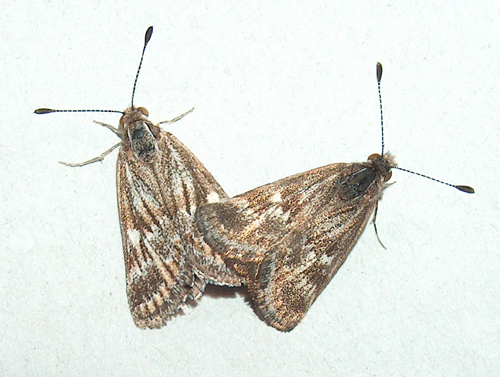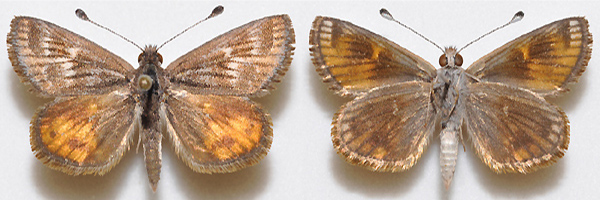
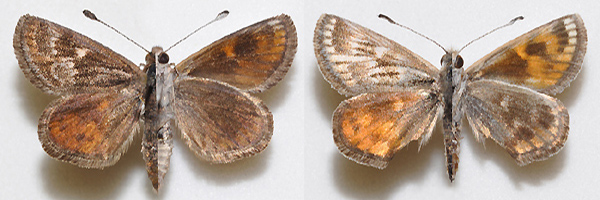
Typical male 26 mm
Dark form male 26 mm (left); pale form male 26 mm (right)
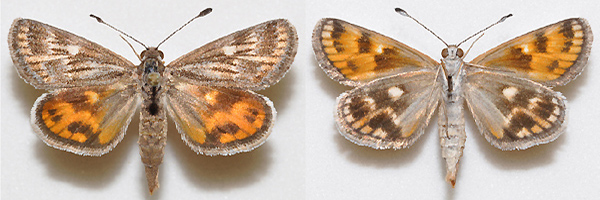
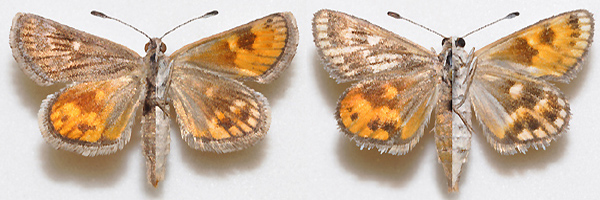
Typical female 26 mm
Dark form female 26 mm (left); worn pale form female 26 mm (right)
Another very small sun-moth species 20-30 mm, only recently discovered. It is similar to S. theresa, but is presently only known to fly in autumn on the native Austrostipa eremophila-A. scabra grassland plains of the east Nullarbor Plains. It is also closely related to S. selene. Its morphology is variable and occurs in both dark and pale forms.
The sun-moth is active during the heat of the day. The males set up mating territories (leks) in the habitat area early in the day, usually on open ground or along narrow tracks, where they either remain settled, unless disturbed, or an unmated female or another male enters the lek. Some males will periodically fly over the habitat area looking for unmated females. Newly emerged females are either quickly found by cruising males, or if unfound will then fly into the lek area to find a male. Coupling occurs quickly and the pair will remain stationary on the ground or on a clump of host-grass unless interrupted by another male which will attempt to dislodge the original male. They remain coupled for a couple of hours. Unmated females (and possibly the settled males) send out pheromone signals. The female pheromones linger until coupling occurs and can be picked up by flying males from 5 m or more, which will make a right-angle turn in flight when they smell the pheromones. The males continue to fly over the habitat for the rest of the day, looking for females, mated or unmated. Females are then usually active, laying eggs on the hostgrasses.
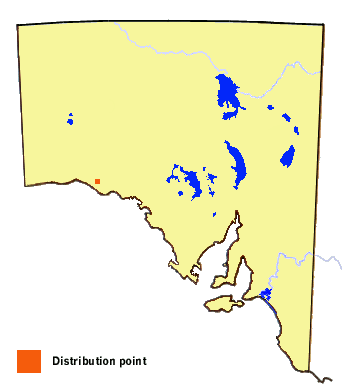
The primary hostplants are Austrostipa eremophila (Desert Spear-grass) and A. scabra (Rough Spear-grass) (Poaceae). This sun-moth does not have a proboscis.
The eggs are laid on the stems of the hostplant near its base, which the female usually accesses by landing on the ground near the plant then walking up to the base, then flits onto the grass a few centimetres off the ground to test it and try and find a place to lay. The eggs are typical, elongate ellipsoidal spindle shaped, pale yellow to yellowish white when newly laid, tending to fade with age. They are about 1.6 x 0.8 mm, with four (or sometimes five) prominent equi-spaced longitudinal ridges converging at each end of the egg. Eggs take 40 days to hatch. Larvae likely live within the root zone similar to the grass feeding larva of other Synemon species. First instar larvae are sub-translucent pale yellow and of typical Synemon shape, with a brownish head and anterior prothoracic dorsal plate. Mature larvae and pupae are undescribed.
It is considered local or rare. Its habitat is widespread, but its distribution has not been fully studied. As it is located on aboriginal land it should be secure.
